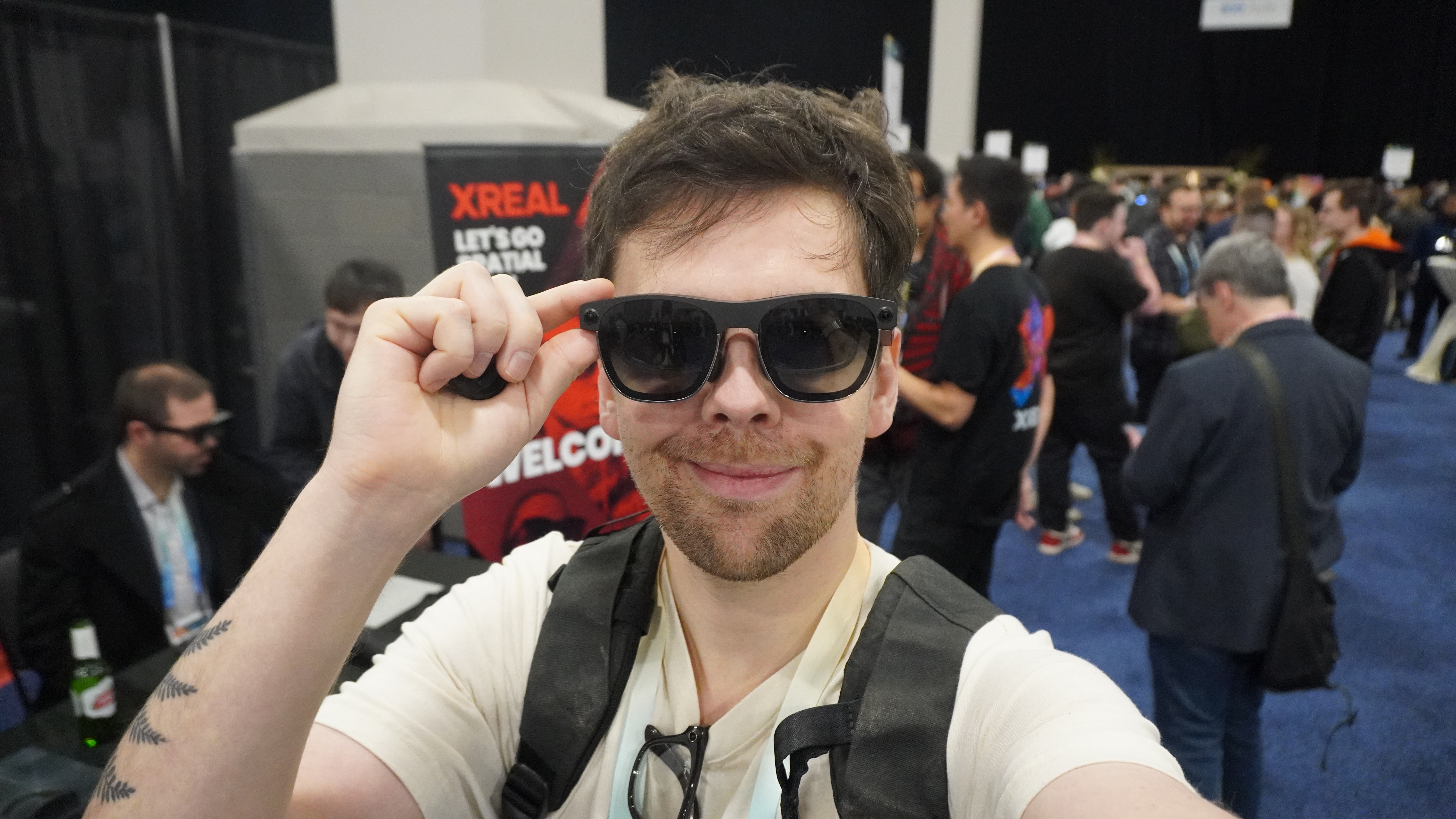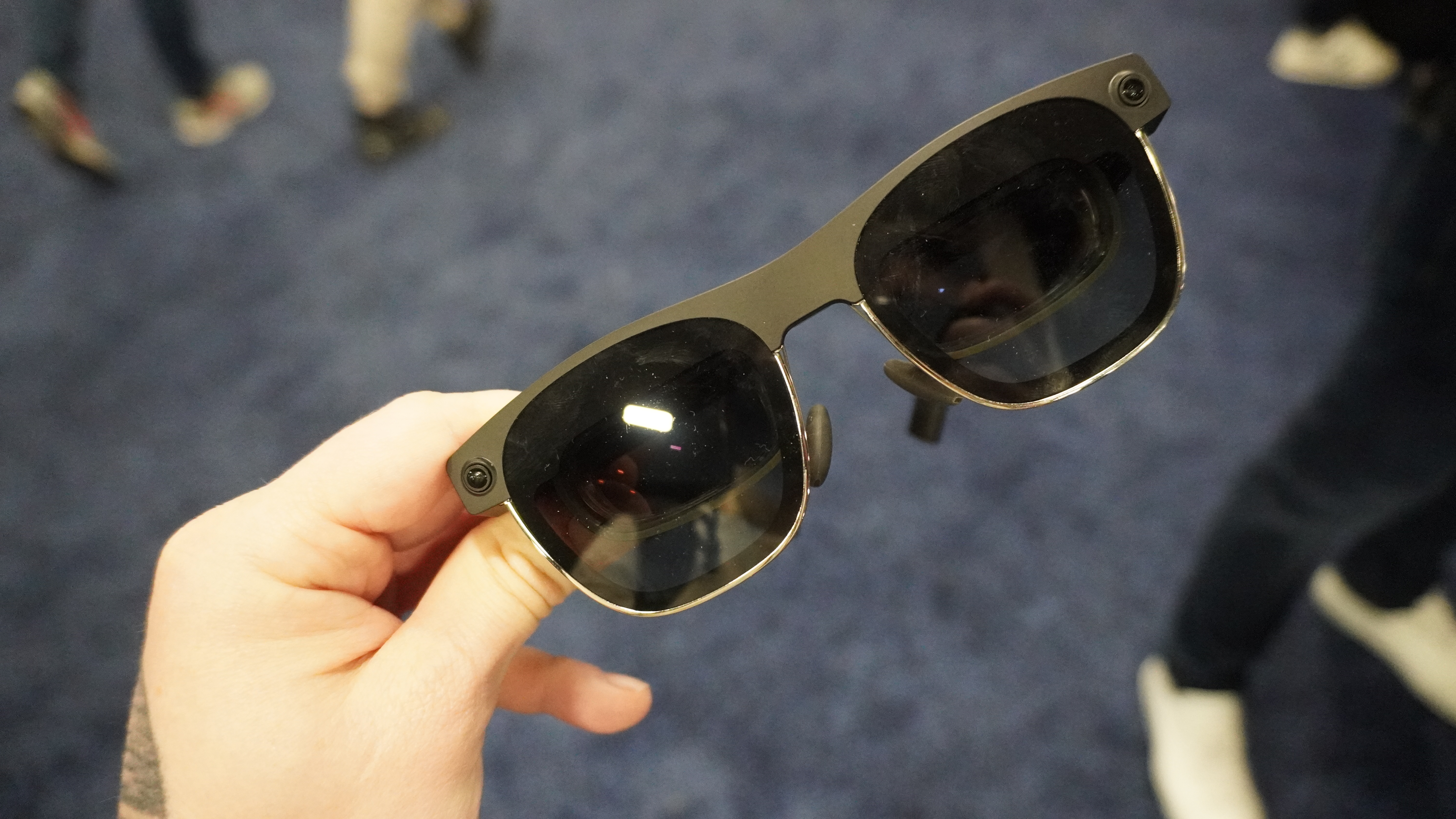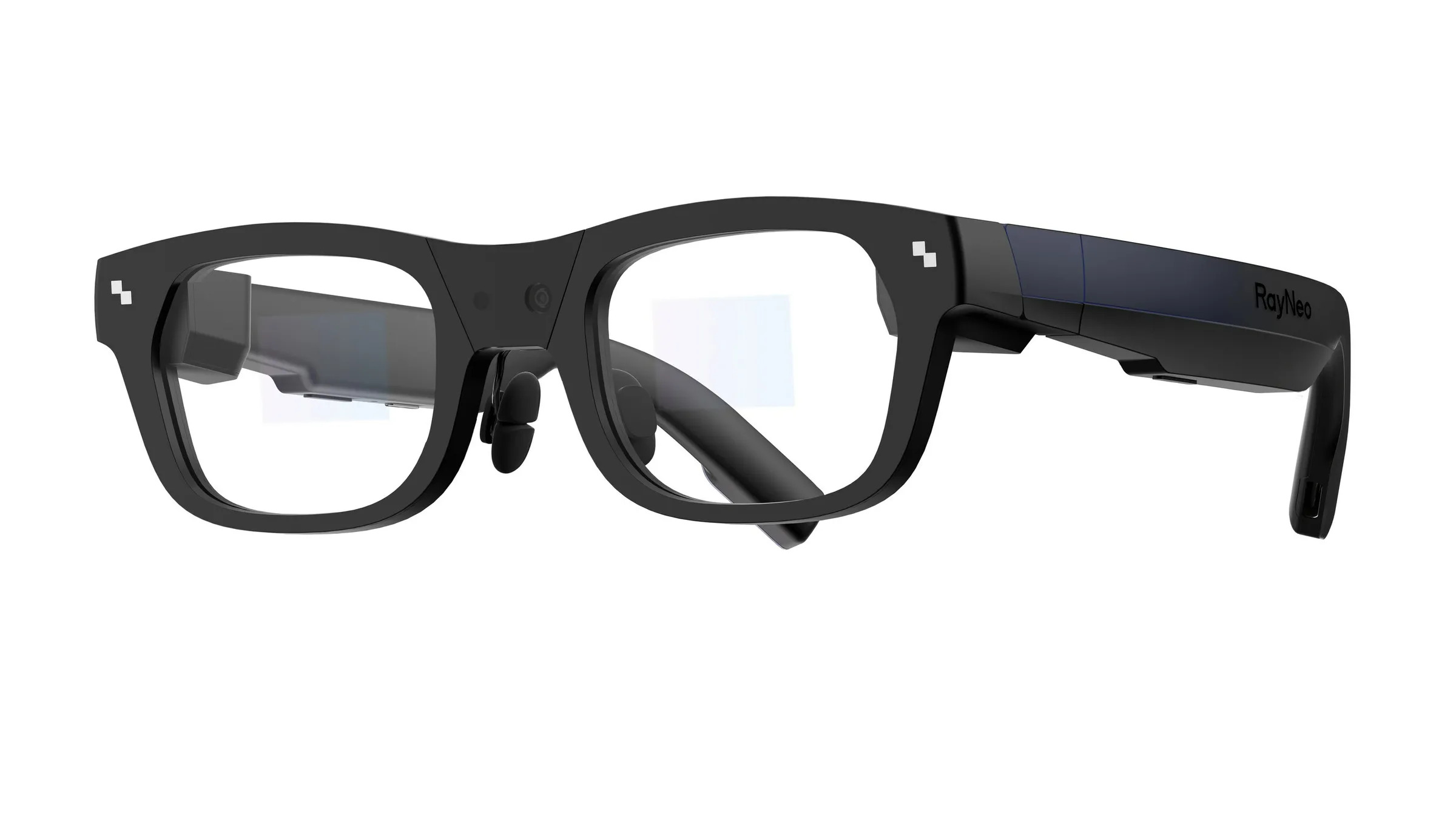The best AR glasses of CES 2024 (so far)
The AR revolution is here, and these are leading the charge

The future of AR glasses is coming into focus at CES 2024. No longer are they just a glorified discrete screen for your eyes — the parallel paths of VR headset and AR glasses development are finally starting to merge, which is sure to make the Apple Vision Pro and Meta Quest 3 sweat.
While AI has been the big buzzword of the show (at the time of writing, it has been mentioned 236 times by companies presenting and exhibiting), this is easily the second biggest revolution coming to consumer tech. And three sets of specs have defined what can be possible now and looking into the future. Here are the best AR glasses of CES 2024.
Be sure to check out our Best of CES 2024 award winners to see the 23 best gadgets of the show.
1. Xreal Air 2 Ultra

Do I really need to introduce these? After snapping up 51% of total market share in AR glasses, Xreal has asserted its dominance by looking for a fight with Apple. While there are some evolutions in this category from other companies, the Air 2 Ultra have set the gold standard by really starting to blur that line between AR specs and VR headsets — thanks to those dual 3D cameras up front.
These enable all the tracking capabilities you see in the likes of the Vision Pro: mapping out rooms and hand tracking. Alongside this, an expanded field of view in the 1080p OLED displays helps further immerse you in your spatial computing surroundings, and an upgraded premium design gives them an aesthetic similar to luxury sunglasses.
Xreal does still have a little bit of work to do when it comes to display technology — figuring out a way to remove the prisms altogether (more about that in the next entry), but with the Air 2 Ultra and its partnerships with the likes of Qualcomm and BMW, I’m starting to get pretty hyped about the future potential here.
2. RayNeo X2 Lite

What is the one most common complaint about AR glasses? It’s the display prisms of course. They lead to the glasses looking a little larger than life on any user’s face, and can make for some uncomfortability after time. RayNeo has heard your concerns, and in response the team demoed some ultralight X2 Lite AR glasses that ditch the prisms altogether.
Sign up to get the BEST of Tom's Guide direct to your inbox.
Get instant access to breaking news, the hottest reviews, great deals and helpful tips.
Thanks to MicroLED optical waveguide display technology, RayNeo has been able to show a stunningly vibrant picture at up to 1,500 nits of brightness all in a lens-esque film that rests on the glasses themselves. The end result of this weight cutting is a total mass of just 2.1 ounces (60 grams). That’s mightily impressive given the Xreal Air 2 Ultra come in at over 80 grams.
There are some downsides to making the most of MicroLED. Namely, the field of view is narrowed to 30 degrees. But of course, there are more innovations going on under the hood — thanks to a helpful AI assistant that runs on Qualcomm’s Snapdragon AR1 Gen 1 platform.
3. Asus AirVision M1

This year, Asus has joined the AR glasses competition, and the end result is an impressive first gen pair of specs with some serious software smarts for spatial computing potential. Each Micro OLED display pumps out a 1080p picture with 1,100 nits of brightness, and the 57-degree field of view matches up to the best of the best out there.
But the secret weapon comes in the form of Asus’ Virtual Screens software. You see, a lot of Xreal’s spatial computing capabilities are fixed around offering an ultrawide display option. With this app, Asus gives you a fully customizable suite of up to 10 additional screens, alongside screen pinning to keep them fixed in place. It’s a seriously impressive display (pardon the pun).
So, as I mentioned in my prediction for AR being huge at CES 2024, the big innovations are not all coming from one company. The dream product is a combination of all three of these, and we could see it sooner rather than later.
Check out our CES 2024 hub for all the latest news from the show as it happens. Follow the Tom’s Guide team in Las Vegas as we cover everything AI, as well as the best new TVs, laptops, fitness gear, wearables and smart home gadgets at the show.
And be sure to check out the Tom's Guide TikTok channel for all the newest videos from CES!
More from Tom's Guide

Jason brings a decade of tech and gaming journalism experience to his role as a Managing Editor of Computing at Tom's Guide. He has previously written for Laptop Mag, Tom's Hardware, Kotaku, Stuff and BBC Science Focus. In his spare time, you'll find Jason looking for good dogs to pet or thinking about eating pizza if he isn't already.
-
Alex -_- V Same 1080p microLED "too low res" head mounted displays, same birdpath with display prism right in the center of your field of view, same crappy Fov at 45-50°. This CES is a total disaster for AR glasses, the only model that proposes waveguide + standalone is the RayNeo X2, but the resolution and FoV are ... prehistoricReply
Where are the 1440p models ? where are the 4K models ? where are the 70-80° FoV models ? where are the high-res waveguive models ? Why everything presented at this CES share the same spec than 3 years old AR glasses ?
Lumus won XR awards 2023 "best AR solution" and its Z-Lens 2D waveguide technology was introduced at CES 2023... 1 year ago. 2k per eye, 50 to 70° FOV, allowing thin and light high-end AR glasses, and all we saw at CES 2024 are the same 1080p Birdpath models we know since 3 years.
I am very disapointed, and very surprised not to read anything on this subject concerning what was presented to this C.E.S -
shalte81 Reply
I'm with you 100%. I am beyond frustrated to the point that I've decided to check out of AR altogether for some years. At that point, I'll evaluate the options on the market to see if the following requirements are satisfied:Alex -_- V said:Same 1080p microLED "too low res" head mounted displays, same birdpath with display prism right in the center of your field of view, same crappy Fov at 45-50°. This CES is a total disaster for AR glasses, the only model that proposes waveguide + standalone is the RayNeo X2, but the resolution and FoV are ... prehistoric
Where are the 1440p models ? where are the 4K models ? where are the 70-80° FoV models ? where are the high-res waveguive models ? Why everything presented at this CES share the same spec than 3 years old AR glasses ?
Lumus won XR awards 2023 "best AR solution" and its Z-Lens 2D waveguide technology was introduced at CES 2023... 1 year ago. 2k per eye, 50 to 70° FOV, allowing thin and light high-end AR glasses, and all we saw at CES 2024 are the same 1080p Birdpath models we know since 3 years.
I am very disapointed, and very surprised not to read anything on this subject concerning what was presented to this C.E.S
1. Lightweight and comfortable. Must be light enough to wear only with stems (no head straps!) for long hours of work.
2. High resolution and high FOV. Must be transparent (technology similar to waveguide). No birdbath, and no VR goggles with computer vision passthrough. Must be capable of hosting multiple high-resolution virtual displays for simultaneous viewing.
3. Must support some efficient, standardized protocol for getting virtual display data from my devices to the glasses. No proprietary, half-baked wireless garbage software, no pegging my GPU with user-space encoding, etc. display overhead which should be handled by dedicated, non-user space hardware.
I huge part of this effort could be expedited by explaining to the Qualcomm, Intel, Microsoft, Apple, Samsung, Meta, etc. CEOs that they aren't going to fully dominate this new market just as they have never fully dominated any previous markets, and then locking them in a room without food or water until they agree to standards and protocols for efficient AR. 🤣
